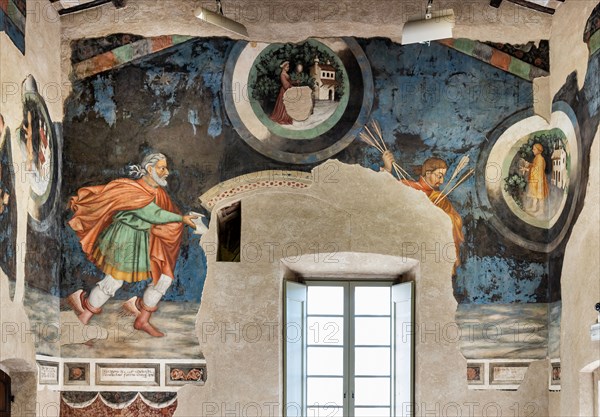*****************
https://it.wikipedia.org/wiki/Trinci
https://de.wikipedia.org/wiki/Trinci_(Adelsgeschlecht)
https://en.wikipedia.org/wiki/Trinci
search.php?keywords=Trinci
Between the first appearances in our discussions (both at 5 December 2012) were:
Phaeded: "Arezzo", about the fight between Vitelleschi and Corrado III Trinci and Corrado was prisoned
viewtopic.php?f=11&t=901&p=13158&hilit=trinci#p13158
Huck: start of the thread "Trionfi customs 1436 and 1438" ... Vitelleschi had a Trionfo in 1436 and Corrado had a trionfo in 1438
viewtopic.php?p=13159#p13159
Of importance was the text, which I partially quoted in my post:
****************I stumbled about this ...
The King's Body: Sacred Rituals of Power in Medieval and Early Modern Europe
by Sergio Bertelli, R. Burr Litchfield (2003)
http://books.google.de/books?id=u8KHqA_ ... &q&f=false
It notes - beside much other material - a triumphal event for cardinal Vitelleschi in 1436 and another event for Corrado III Trinci in Foligno at 14th of May 1438 (after he had conquered Spoleto).
Interestingly both honored persons ended murdered in prisons, Vitelleschi in April 1440 (prisoned short before) and Corrado Trinci at 14th of June 1441(prisoned in 1439) ... so somehow in the time, which is of special interest to us.
Both died in the context of the reign of pope Eugen. If I get this right, then Vitelleschi captured Trinci, was then prisoned and killed himself some time later, and then also Trinci was killed.
There are some contradictions, if the Trionfo of Corrado III Trinci about a victory in Spoleto took place in May 1436 or in May 1438. I decided in 2012 for 1438 cause of information in the condottieridiventura page about Talione Furlano ....
https://condottieridiventura.it/taliano-furlano/
In May 1438 this text is given ...
automatic translationChiede rinforzi a Francesco Piccinino, a Corrado Trinci ed alle autorità di Norcia, di Bevagna e di Montefalco affinché tutti insieme assalgano Spoleto. Ai primi del mese prende la via dei monti, vince la resistenza dei presidi che sorvegliano i passi ed irrompe nottetempo nella città sottoposta ad un orrendo saccheggio che non risparmia né case né chiese. Sono mille gli spoletini cui è richiesto un riscatto e 14000 some di bottino condotte a Foligno. Il Furlano si ricongiunge ancora con Francesco Piccinino. Muove ora contro Assisi; si accampa a Santa Maria degli Angeli dove, dopo due giorni, è raggiunto da due commissari viscontei che sollecitano il suo rientro in Lombardia. Prende la strada per Pianello e si ferma ad assediare Pergola.
Here is a complete translation of the Italian page for Talione Furlano: https://condottieridiventura-it.transla ... r_pto=wappMag. Umbria and Marche
He (Talione Furlano) asks for reinforcements from Francesco Piccinino, Corrado Trinci and the authorities of Norcia, Bevagna and Montefalco so that they all attack Spoleto together. At the beginning of the month he takes the road to the mountains, overcomes the resistance of the garrisons who guard the passes and breaks into the city at night, subjected to a horrendous looting that spares neither houses nor churches. There are a thousand Spoletini who are asked for a ransom and 14,000 sums of booty taken to Foligno. Furlano is reunited again with Francesco Piccinino. He now moves against Assisi; he camped at Santa Maria degli Angeli where, after two days, he was joined by two Visconti commissioners who urged his return to Lombardy. He takes the road to Pianello and stops to besiege Pergola.





